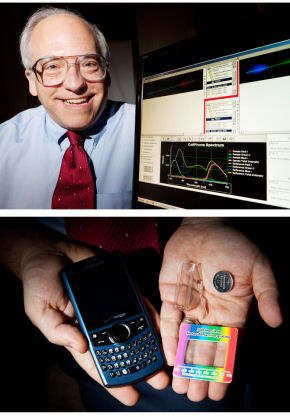
University of Illinois chemistry professor Alexander Scheeline has written software that turns a cell phone with a camera into a spectrometer, one of the most widely used instruments in chemistry for identifying and quantifying materials in both the physical and biological sciences.
Scheeline firmly believes the ultra-cheap spectrometer will foster critical thinking in students. “Science is basically about using your senses to see things – it’s just that we’ve got so much technology that now it’s all hidden,” he explained. “The student gets the impression that a measurement is something that goes on inside a box and it’s completely inaccessible, not understandable – the purview of expert engineers. That’s not what you want them to learn. In order to get across the idea, ‘I can do it, and I can see it, and I can understand it,’ they’ve go to build the instrument themselves. ”
In a spectrometer, white light shines through a sample solution. The solution absorbs certain wavelengths of light. A diffraction grating then spreads the light into its color spectrum like a prism. Analyzing that spectrum can tell chemists about the properties of the sample.
For a light source, Scheeline used a single LED powered by a 3-volt battery. Diffraction gratings and cuvettes, the small, clear repositories to hold sample solutions, are readily available from scientific supply companies for a few cents each. The entire setup cost less than $3, according to Scheeline.
The limiting factor seemed to be in the light sensor, or photodetector, to capture the spectrum for analysis. “All of a sudden this light bulb went off in my head: a photodetector that everybody already has! Almost everybody has a cell phone, and almost all phones have a camera,” Scheeline said. “I realized, if you can get the picture into the computer, it’s only software that keeps you from building a cheap spectrophotometer.”
To remove that obstacle, he wrote a software program to analyze spectra captured in JPEG photo files and made it freely accessible online, along with its source code and instructions to students and teachers for assembling and using the cell-phone spectrometer.
In the United States, Scheeline used cell-phone spectrometers in an Atlanta high school science program in the summers of 2009 and 2010. By the end of the 45-minute class, he was delighted to find students grasping chemistry concepts that seemed to elude students in similar programs using only textbooks. For example, one student inquired about the camera’s sensitivity to light in the room and how that might affect its ability to read the spectrum.
“And I said, ‘You’ve discovered a problem inherent in all spectrometers: stray light.’ I have been struggling ever since I started teaching to get across to university students the concept of stray light and what a problem it is, and here was a high school kid who picked it right up because it was in front of her face!” Scheeline said.
Scheeline wrote a detailed account of the cell-phone spectrometer and its potential for chemistry education in an article in the journal Applied Spectroscopy. He hopes that the free availability of the source code will inspire programmers to develop smart-phone applications so that the analyses can be performed in-phone.
“The potential is here to make analytical chemistry a subject for the masses rather than something that is only done by specialists,” Scheeline said. “There’s no doubt that getting the cost of equipment down to the point where more people can afford them in the education system is a boon for everybody.”
Related:
Honey, I Shrunk The Particle Accelerator
Quake detection gets cheap and cheerful
The Search For Rock



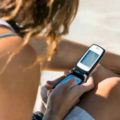
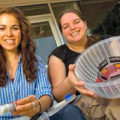
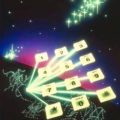
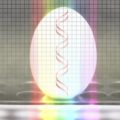

Comments are closed.